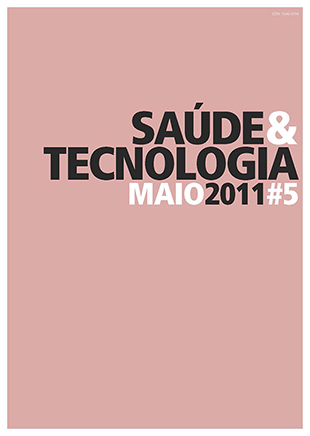Factors that influence the stability of the 18F-FDG
DOI:
https://doi.org/10.25758/set.354Keywords:
18F-FDG, Radiochemical purity, Autoradiolyse, Percentage of 18FAbstract
Introduction – The absence of a cyclotron for the production of 2 - [18F] Fluor-2-deoxy-D-glucose (18F-FDG) is now a reality for most of the centers where Positron Emission Tomography (TEP) exams are held for. It is therefore important to ensure the quality of this radiopharmaceutical from the moment of its synthesis till its administration to the patient. The purpose of this study is to show the influence of the parameters temperature, pH, radioactive concentration (CR), and time in radiochemical purity. Methodology – We analyzed the pH and the radiochemical purity [by thin layer chromatography (TLC)] of six samples of 18F-FDG with different CR and at different times and temperatures. Results – There was an increase in the percentage of 18F with time. Nevertheless, results show that sample dilution decreases the degradation of 18F-FDG. However, comparing only the diluted samples (185 and 740 MBq / ml), there is a positive relationship between CR and the percentage of 18F. There was also an increase in the percentage of 18F at higher temperatures. Conclusion – We advise diluting the solution and the period of time for storage of the 18F-FDG should not be so long. The samples must have a stable temperature and pH.
Downloads
References
Jiménez Romero IR, Roca Engronyat M, Campos Anón F, Cordero Ramajo J, Liarte Trías I, Benítez Segura A, et al. Influencia de la concentración radioactiva y el tiempo de almacenamiento sobre la pureza radioquímica de la 2-[18F]-fluoro-2-desoxi-D-glucosa [18F]-fluoro-2-desoxi-D-glucosa influence of radioactive concentration and storage time on radiochemical purity of 18f-fdg]. Rev Esp Med Nucl. 2006;25(1):20-5. Spanish
European Directorate for the Quality of Medicines. European pharmacopoeia. 6th ed. Paris: Council of Europe; 2007. ISBN-13: 9789287160614
Jacobson MS, Dankwart HR, Mahoney DW. Radiolysis of 2-[18F]-fluoro-2-desoxi-D-glucose ([18F]FDG) and the role of ethanol and radioactive concentration. Appl Radiat Isot. 2009;67(6):990-5.
Kiselev MY, Tadino V, inventors; Eastern Isotopes, Inc., assignee. Stabilization of radiopharmaceuticals labeled with 18-F. United States Patent US 7,018,614 B2. 2006 Mar 28.
Fawdry RM. Radiolysis of 2-[18F]-fluoro-2-deoxy-D-glucose (FDG) and the role of reductant stabilisers. Appl Radiat Isot. 2007;65(11):1193-201.
Meyer GJ, Matzke KH, Hamacher K, Füchtner F, Steinbach J, Notohamiprodjo G, et al. The stability of 2-[18F]-fluoro-2-deoxy-D-glucose towards epimerisation under alkaline conditions. Appl Radiat Isot. 1999;51(1):37-41.
Búriová E, Macásek F, Melichar F, Kropácek M, Procházka L. Autoradiolysis of the 2-[18F]-fluoro-2-deoxy-D-glucose radiopharmaceutical. J Radioanal Nucl Chem. 2005;264(3):595-602.
Karwath P, Sartor J, Gries W, Wodarski C, Dittmar C, Biersack HJ, et al. Steam sterilization and automatic dispensing of [18F]fludeoxyglucose (FDG) for injection. Appl Radiat Isot. 2005;62(4):577-86.
Hung JC. Comparison of various requirements of the quality assurance procedures for 18F-FDG injection. J Nucl Med. 2002;43(11):1495-506.
Downloads
Published
Issue
Section
License
Copyright (c) 2022 Saúde e Tecnologia

This work is licensed under a Creative Commons Attribution-NonCommercial-NoDerivatives 4.0 International License.
The journal Saúde & Tecnologia offers immediate free access to its content, following the principle that making scientific knowledge available to the public free of charge provides greater worldwide democratization of knowledge.
The journal Saúde & Tecnologia does not charge authors any submission or article processing charges (APC).
All content is licensed under a Creative Commons CC-BY-NC-ND license. Authors have the right to: reproduce their work in physical or digital form for personal, professional, or teaching use, but not for commercial use (including the sale of the right to access the article); deposit on their website, that of their institution or in a repository an exact copy in electronic format of the article published by Saúde & Tecnologia, provided that reference is made to its publication in Saúde & Tecnologia and its content (including symbols identifying the journal) is not altered; publish in a book of which they are authors or editors the total or partial content of the manuscript, provided that reference is made to its publication in Saúde & Tecnologia.







